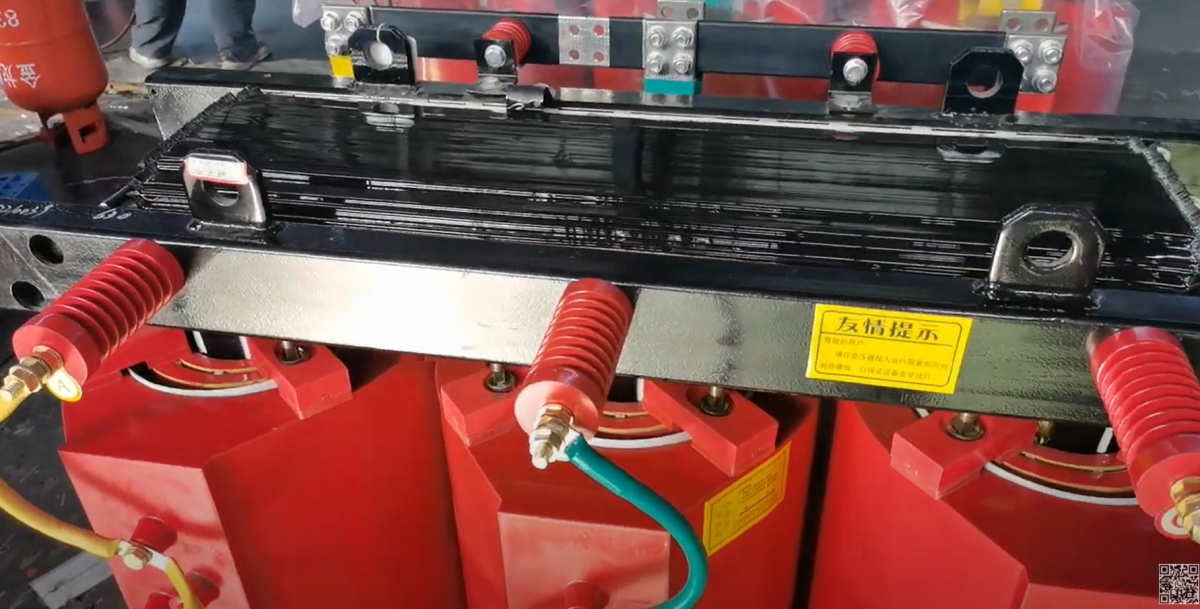Table of Contents
Comparing Dry Type and Oil Filled Transformers
Transformers are essential components in electrical systems, as they help to regulate voltage Levels and ensure the safe and efficient distribution of electricity. When it comes to transformers, there are two main types that are commonly used: dry type transformers and oil-filled transformers. In this article, we will compare these two types of transformers and discuss their advantages and disadvantages.

Dry type transformers, as the name suggests, do not use oil as a cooling medium. Instead, they rely on air to dissipate heat and keep the transformer cool. This makes them a popular choice for indoor applications where the use of oil may not be practical or safe. Dry type transformers are also more environmentally friendly, as they do not pose the risk of oil leaks or spills.
| model | Rating capacity (KVA) | Voltage combination(KV) | No-load losses(W) | Load losses(W) | No-load current (%) | Short-circuit impedance (%) |
| SC13-30 | 30 | 6,6.3,6.6,10,11/0.4 | 150 | 710 | 2.3 | 4.0 |
| SC13-50 | 50 | 6,6.3,6.6,10,11/0.4 | 215 | 1000 | 2.2 | 4.0 |
| SC13-80 | 80 | 6,6.3,6.6,10,11/0.4 | 295 | 1380 | 1.7 | 4.0 |
| SC13-100 | 100 | 6,6.3,6.6,10,11/0.4 | 320 | 1570 | 1.7 | 4.0 |
| SC13-125 | 125 | 6,6.3,6.6,10,11/0.4 | 375 | 1850 | 1.5 | 4.0 |
| SCB13-160 | 160 | 6,6.3,6.6,10,11/0.4 | 430 | 2130 | 1.5 | 4.0 |
| SCB13-200 | 200 | 6,6.3,6.6,10,11/0.4 | 495 | 2530 | 1.3 | 4.0 |
| SCB13-250 | 250 | 6,6.3,6.6,10,11/0.4 | 575 | 2760 | 1.3 | 4.0 |
| SCB13-315 | 315 | 6,6.3,6.6,10,11/0.4 | 705 | 3470 | 1.1 | 4.0 |
| SCB13-400 | 400 | 6,6.3,6.6,10,11/0.4 | 785 | 3990 | 1.1 | 4.0 |
| SCB13-500 | 500 | 6,6.3,6.6,10,11/0.4 | 930 | 4880 | 1.1 | 4.0 |
| SCB13-630 | 630 | 6,6.3,6.6,10,11/0.4 | 1070 | 5880 | 0.9 | 4.0 |
| SCB13-630 | 630 | 6,6.3,6.6,10,11/0.4 | 1040 | 5960 | 0.9 | 6.0 |
| SCB13-800 | 800 | 6,6.3,6.6,10,11/0.4 | 1210 | 6960 | 0.9 | 6.0 |
| SCB13-1000 | 1000 | 6,6.3,6.6,10,11/0.4 | 1410 | 8130 | 0.9 | 6.0 |
| SCB13-1250 | 1250 | 6,6.3,6.6,10,11/0.4 | 1670 | 9690 | 0.9 | 6.0 |
| SCB13-1600 | 1600 | 6,6.3,6.6,10,11/0.4 | 1960 | 11700 | 0.9 | 6.0 |
| SCB13-2000 | 2000 | 6,6.3,6.6,10,11/0.4 | 2440 | 14400 | 0.7 | 6.0 |
| SCB13-2500 | 2500 | 6,6.3,6.6,10,11/0.4 | 2880 | 17100 | 0.7 | 6.0 |
| Type | Rating power (KVA) | Voltage combination(KV) | No-load losses(W) | Load losses(W) | No-load current (%) | Short-circuit voltage (%) |
| SCH15-30 | 30 | 6,6.3,6.6,10,11/0.4 | 70 | 710 | 1.6 | 4.0 |
| SCH15-50 | 50 | 6,6.3,6.6,10,11/0.4 | 90 | 1000 | 1.4 | 4.0 |
| SCH15-80 | 80 | 6,6.3,6.6,10,11/0.4 | 120 | 1380 | 1.3 | 4.0 |
| SCH15-100 | 100 | 6,6.3,6.6,10,11/0.4 | 130 | 1570 | 1.2 | 4.0 |
| SCH15-125 | 125 | 6,6.3,6.6,10,11/0.4 | 150 | 1850 | 1.1 | 4.0 |
| SC(B)H15-160 | 160 | 6,6.3,6.6,10,11/0.4 | 170 | 2130 | 1.1 | 4.0 |
| SC(B)H15-200 | 200 | 6,6.3,6.6,10,11/0.4 | 200 | 2530 | 1.0 | 4.0 |
| SC(B)H15-250 | 250 | 6,6.3,6.6,10,11/0.4 | 230 | 2760 | 1.0 | 4.0 |
| SC(B)H15-315 | 315 | 6,6.3,6.6,10,11/0.4 | 280 | 3470 | 0.9 | 4.0 |
| SC(B)H15-400 | 400 | 6,6.3,6.6,10,11/0.4 | 310 | 3990 | 0.8 | 4.0 |
| SC(B)H15-500 | 500 | 6,6.3,6.6,10,11/0.4 | 360 | 4880 | 0.8 | 4.0 |
| SC(B)H15-630 | 630 | 6,6.3,6.6,10,11/0.4 | 420 | 5880 | 0.7 | 4.0 |
| SC(B)H15-630 | 630 | 6,6.3,6.6,10,11/0.4 | 410 | 5960 | 0.7 | 6.0 |
| SC(B)H15-800 | 800 | 6,6.3,6.6,10,11/0.4 | 480 | 6960 | 0.7 | 6.0 |
| SC(B)H15-1000 | 1000 | 6,6.3,6.6,10,11/0.4 | 550 | 8130 | 0.6 | 6.0 |
| SC(B)H15-1250 | 1250 | 6,6.3,6.6,10,11/0.4 | 650 | 9690 | 0.6 | 6.0 |
| SC(B)H15-1600 | 1600 | 6,6.3,6.6,10,11/0.4 | 780 | 11730 | 0.6 | 6.0 |
| SC(B)H15-2000 | 2000 | 6,6.3,6.6,10,11/0.4 | 1000 | 14450 | 0.5 | 6.0 |
| SC(B)H15-2500 | 2500 | 6,6.3,6.6,10,11/0.4 | 1200 | 17170 | 0.5 | 6.0 |
On the other hand, oil-filled transformers use oil as a cooling medium to dissipate heat generated during operation. The oil helps to transfer heat away from the transformer windings and keep the temperature within safe limits. Oil-filled transformers are typically used in outdoor applications where the risk of fire is lower, as the oil provides an additional layer of insulation and protection.
One of the main advantages of dry type transformers is their low maintenance requirements. Since they do not use oil, there is no need for regular oil testing and maintenance to ensure the transformer is operating correctly. This can result in cost savings over the lifetime of the transformer.
Oil-filled transformers, on the other hand, are known for their high efficiency and reliability. The oil helps to keep the transformer cool and ensures that it operates at optimal performance levels. Oil-filled transformers are also more durable and can withstand higher operating temperatures than dry type transformers.

When it comes to installation, dry type transformers are typically easier to install than oil-filled transformers. Since they do not require the use of oil, there is no need for special containment measures or additional Safety precautions during installation. This can result in faster installation times and lower installation costs.
Oil-filled transformers, on the other hand, require careful handling and installation due to the use of oil. Special precautions must be taken to prevent oil leaks and spills during installation, which can add to the overall cost and complexity of the installation process.
In terms of cost, dry type transformers are generally more expensive upfront than oil-filled transformers. However, the lower maintenance requirements and longer lifespan of dry type transformers can result in cost savings over the lifetime of the transformer. Oil-filled transformers may have lower upfront costs, but the ongoing maintenance and oil testing requirements can add to the overall cost of ownership.
In conclusion, both dry type and oil-filled transformers have their own set of advantages and disadvantages. The choice between the two types will depend on the specific requirements of the application and the preferences of the end user. Whether you choose a dry type or oil-filled transformer, it is important to work with a reputable manufacturer to ensure that you are getting a high-quality product that meets your needs.

